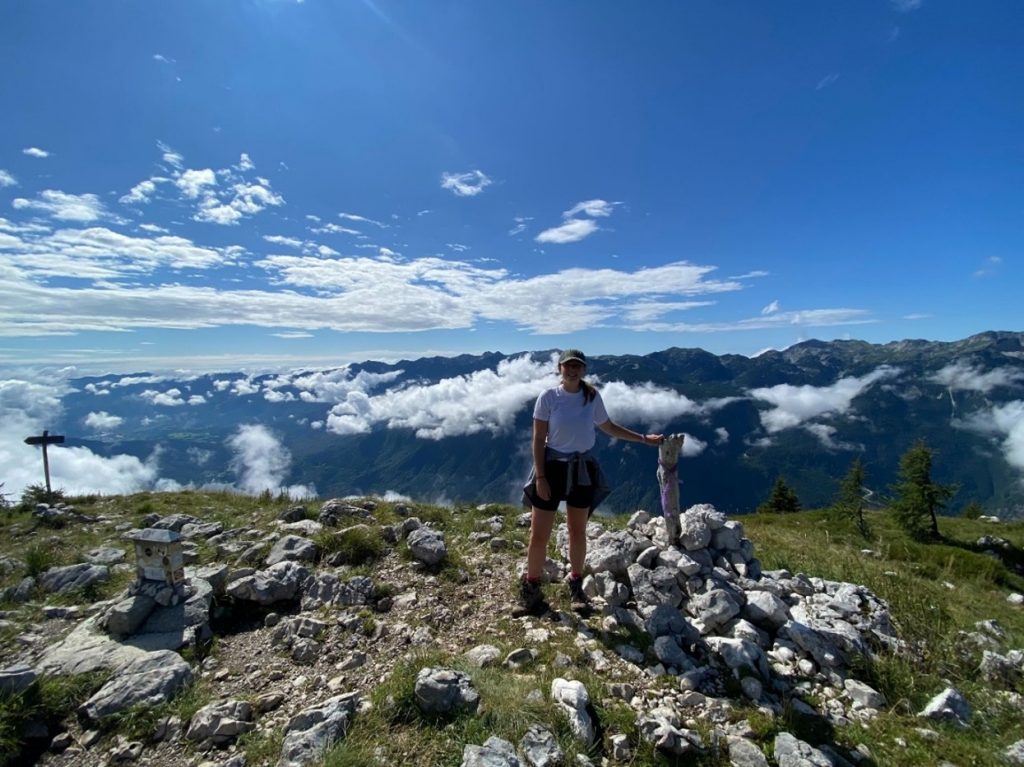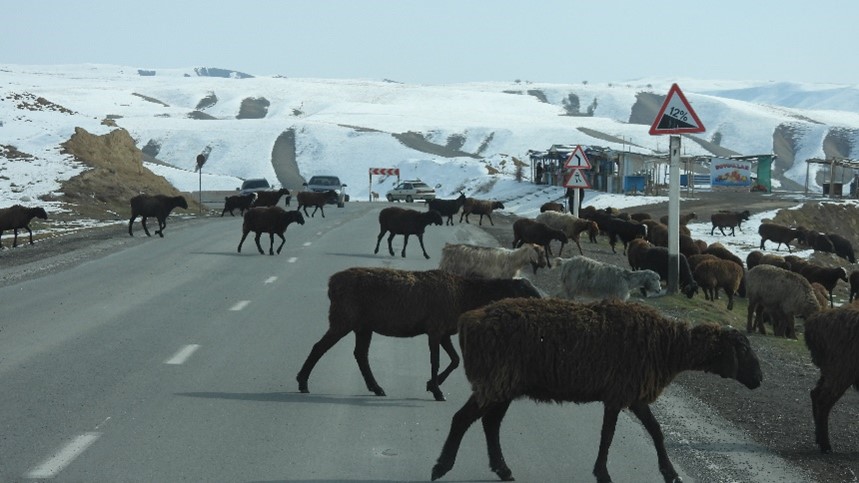News
Stronger protected areas will boost human health in Central Asia

Story | Sep 2024
Central Asian countries are coming together to prevent the emergence and spread of zoonotic diseases by strengthening their protected area networks. Emily Howland and Brett Wilson from UNEP-WCMC’s Protected Planet Initiative discuss their hopes for the project and their biggest surprises so far.
Two years ago, scientists made a startling discovery in Kyrgyzstan. They found ancient DNA samples that indicated the Black Death made the jump from rodents into people in the foothills of the Tian Shan mountains in the early 14th century. It is now widely thought that the world’s earliest-recorded and deadliest pandemic emerged in Central Asia, then spread across Asia, Europe and North Africa, killing nearly 60 per cent of the population.
We now know that most new, emerging and re-emerging infectious diseases originate in animals. These zoonotic diseases remain a threat to human health and prosperity. Across Central Asia, diseases that originate in animals and spread into people, such as brucellosis, anthrax and lumpy skin disease, continue to heavily impact agriculture and societal well-being. Even so, there are steps we can take to reduce this.
National authorities and expert organisations from Kazakhstan, Kyrgyzstan, Tajikistan, Turkmenistan and Uzbekistan are collaborating with international partners to bring together animal, environmental and public health sector experts to find solutions and build resilience. The hope is that these experts will work as a team to develop methods for better detecting and responding to these diseases, while also improving outcomes for biodiversity.
Known as ‘One Health in nature conservation in Central Asia’, the initiative was officially launched at the Convention on Migratory Species Conference of the Parties (COP14) in February, with kick-off meetings taking place last week.
The initiative aims to create space for nature and lead to larger more resilient populations of wild animals that interact less often with livestock and humans. In turn, this should reduce the emergence of zoonotic diseases. Conserving nature through effectively managed, well-connected protected and conserved areas is essential to this and will be the core focus for UNEP-WCMC’s work.
Here, Programme Officers Emily Howland and Dr Brett Wilson share their reflections on and expectations for this exciting new work.
Q: Why is it important to do this work now?
Emily: This is a great opportunity to contribute to national and regional efforts to achieve the world’s most ambitious agreement on biodiversity, the Kunming-Montreal Global Biodiversity Framework (GBF). The aims of the project broadly align with Target 3 of the GBF: to conserve 30 per cent of Earth’s land, inland waters and oceans by 2030.
To achieve this, we will need to increase and strengthen networks of protected and conserved areas. This will involve not only designating new sites but also ensuring all sites are effective, fair and in areas that are important for species and habitats. This is super relevant to the One Health in nature conservation in Central Asia initiative, which focuses on how effective protected and conserved areas can help wild populations and lead to better health outcomes for animals and people.

Brett: There has been a lot of focus in recent years on how disease is transmitted between animals and humans, particularly as climate change is already affecting how diseases emerge and spread.
Thinking about Central Asia specifically, I think for a long time the region has been overlooked and understudied. But it is getting a lot of attention at the moment, especially after the international meeting on migratory species (CMS COP14) earlier this year. There are multiple big biodiversity projects taking place now, which is great to see.

Q: What’s particularly to be celebrated about this project?
Brett: Governments from every country in Central Asia have decided to come together to find out how they can strengthen the resilience of protected areas, and in doing so boost human and animal health. The countries of Central Asia are particularly ambitious in this area, and it’s exciting to see how the One Health concept can be used to foster international regional cooperation.
Emily: Picking up on that, it does feel as though there is a strong desire from leaders across the region to share experiences of environmental protection, and to further collaborate to protect the region’s rich array of landscapes and iconic species. National governments from all five countries have representatives engaged in the project and are joining the discussion in the spirit of regional collaboration.
And there are already some great examples of progress. Tajikistan currently records that more than 22 per cent of the country is protected, which is really remarkable, and Uzbekistan has increased coverage of protected areas by more than three times since 2016.
Q: Can you explain more about the link between protected areas and human health?
Brett: There’s quite a lot of interaction between people, livestock and wild animals in Central Asia. This is because there are large areas of semi-managed pastureland, forest and steppe land, and many rural communities rely heavily on these landscapes for their livelihoods. Often, there are therefore settlements near protected areas, which grazing animals such as goats, cattle, sheep and horses disperse into. As a result, there’s scope for viruses and bacteria to be transmitted between wild animals and herds owned by local communities. We saw that in 2017 in Mongolia, when a viral infection spilled over from livestock into saiga antelopes, killing a quarter of saiga in the country.

One of the big ideas behind this project is to test out the hypothesis that a strengthened protected and conserved area system can reduce the risk of zoonotic disease spillover. Currently some evidence suggests that in undisturbed areas of habitat there are fewer wild animals carrying pathogens and parasites that can infect people. However more work is urgently needed to explore this, particularly to test 1) whether protected and conserved areas can help separate domestic and wild animal populations and 2) support larger, more genetically, diverse and therefore more resilient wild populations.
The International Union for Conservation of Nature (IUCN), which is leading the project, and Zoological Society of London (ZSL) are going to be coordinating work on the ground with local organisations and laboratories to understand more about how diseases spread.
Q: What is your role on this project?
Emily: UNEP-WCMC will focus on the region’s protected areas and other effective area-based conservation measures (OECMs). As part of this, we will lead and support work to build national and regional capacity to map, store, and report data on these areas. Over the next five years, we hope to bring together representatives from all five countries, including technical staff from relevant environmental ministries, to share and build knowledge on these topics. The idea is that those joining will then be able to share ideas and skills gained with their colleagues and other departments.
Brett: Importantly, these workshops will be about exchanging ideas and learning from each other. The UNEP-WCMC team will be presenting on key concepts at the global level, but there’s huge scope for discussion afterwards about how to adapt these to the local context. It’s an exchange of ideas.
Emily: This aligns with the work we do to maintain the Protected Planet Initiative – the most comprehensive source of knowledge and data on the global status of protected and conserved areas. Relevant technical staff will be supported to contribute data to the World Database on Protected Areas (WDPA) and World Database on Other Effective Area-Based Conservation Measures (WD-OECM), both of which are part of the Protected Planet Initiative.

Brett: We hope that all of this will lead to a stream of updates to Protected Planet from the five countries, including for all the new areas that will hopefully be expanded or established within the project. We will also review the status of protected and conserved areas (PCAs) in Central Asia during the project to identify weaknesses and opportunities in the PCA network, and to track the impact of project activities.
Q: What has struck you about the conversations on protected areas so far?
Emily: The concept of ‘other effective area-based conservation measures’ (OECMs) is very new and is a big focus of the project. These are areas that aren’t managed and governed as protected areas but that achieve long-term, effective conservation of biodiversity. Currently, no OECMs in Central Asia are registered in the WD-OECM.
Last year we ran workshops on protected and conserved areas for Western Balkan and Central Asian countries. Most of the interest was in OECMs and how participants from government could report back to their colleagues on this opportunity. OECMs will definitely be talked about more in this new project – particularly because of the potential in Central Asia to report many sites used by pastoralists and for subsistence hunting.
Brett: This could be really significant given one of the aims of this new project is to increase the coverage of effective protected area and OECMs across Central Asia by 500,000 hectares by 2029.
Q: What about transboundary protected areas?
Emily: Transboundary protected areas – those that cross international borders – do already exist in the region, with large areas of the Cold Winter Deserts of Turan protected across parts of Uzbekistan, Turkmenistan, and Kazakhstan, and areas of the Western Tien-Shan Mountain range protected in parts of Kyrgyzstan, Uzbekistan and Kazakhstan. More are being discussed at the moment and one of our roles is help identify where new transboundary sites could be established and managed through cross-boundary or regional cooperation.
Creating more cooperatively managed areas would help the region’s iconic migratory animals, such as argali mountain sheep, Bukhara deer and snow leopards, as well as promote wider collaboration between countries. This will build on similar research UNEP-WCMC did last year to map transboundary conservation areas (TBCAs) across Africa. Together with the Convention on Migratory Species we’ll be analysing where ecological conditions highlight priority areas for consideration as future TBCAs.

Q: What are you most looking forward to about this project?
Brett: This is a region I studied for my PhD and worked in for six years, so I’m really excited to have the opportunity to return more frequently.
Emily: Yes, I’m delighted that Brett is on this project given his extensive knowledge of the region and the fact that he and others on the UNEP-WCMC project team speak some Russian! While I’m not as familiar with Central Asia, during my visits over the past year I’ve seen it has incredible landscapes, kind people and many charismatic species, all of which I’m looking forward to learning more about.
Brett: It's exciting to see something on this scale to expand protected areas across the region, which has some really cool endemic biodiversity. It’s one of the world’s 36 biodiversity hotspots, with lots of tulip species (my area of personal interest as Co-Chair of the IUCN SSC Wild Tulip Specialist Group) as well as snow leopards, mountain goat, marmots and of course the saiga antelope. It really is an amazing region, and I’m looking forward to doing our part to support this important project.
Follow the latest updates from the One Health in nature conservation Central Asia initiative here.
The One Health in nature conservation in Central Asia initiative is coordinated by the International Union for Conservation of Nature, and the partnership includes UNEP-WCMC, Michael Succow Foundation, Secretariat of the Convention of Migratory Species (CMS) and the Zoological Society of London (ZSL). They will collaborate closely over the next five years with national authorities and expert organisations such as CAMP Alatoo in Kyrgyzstan, the Institute of Zoology of Kazakhstan, the Institute of Zoology of Uzbek Academy of Sciences, and the Tajikistan Nature Foundation (TNF). The project is funded by the German Ministry for Environment, Nature Conservation, Nuclear Safety, and Consumer Protection (BMUV) through the International Climate Initiative (IKI).
Main image: A herder in the mountain pastureland of the Shamshy valley, northern Kyrgyzstan (Image © Brett Wilson)
Have a query?
Contact us
communications@unep-wcmc.org
